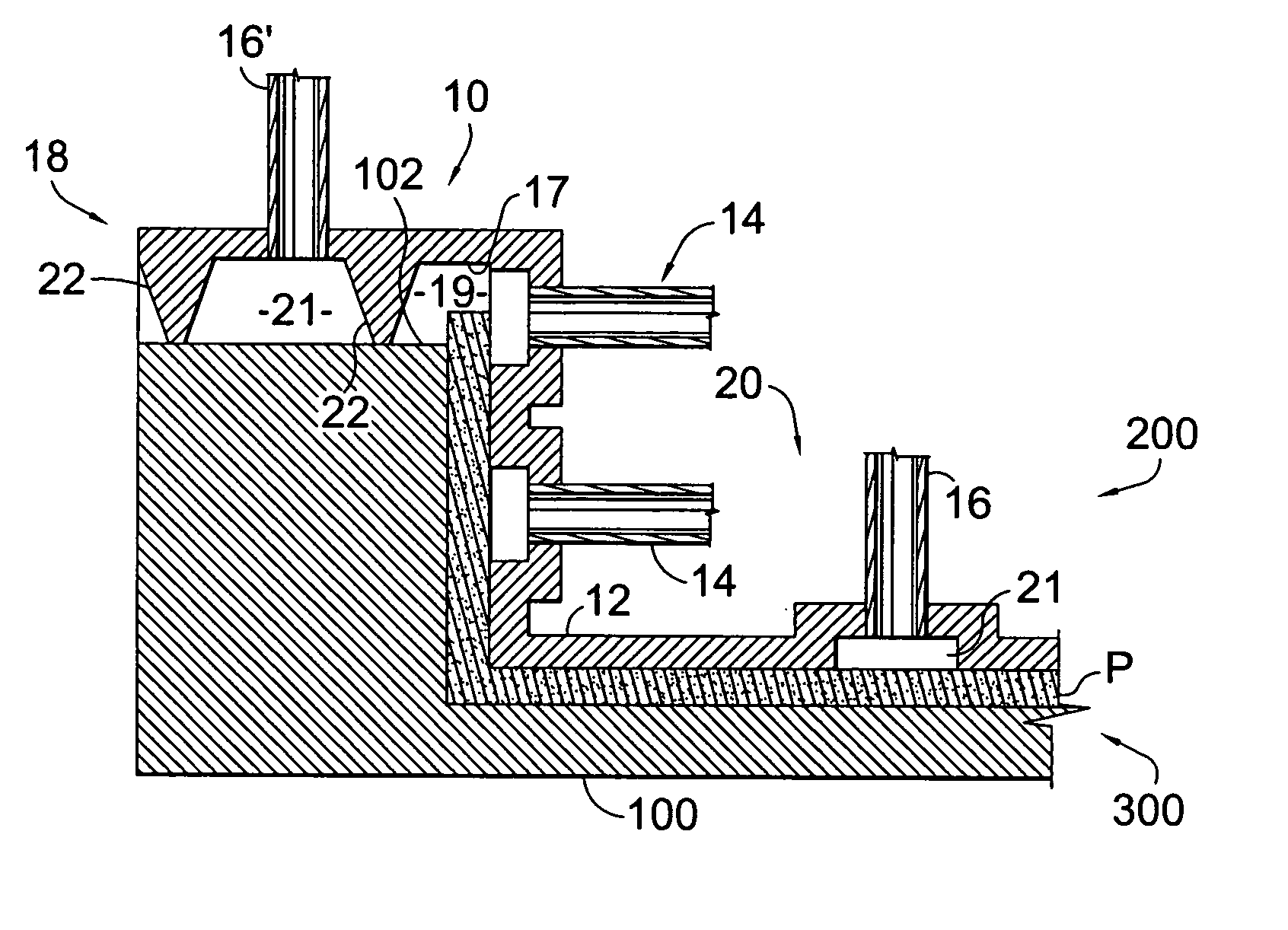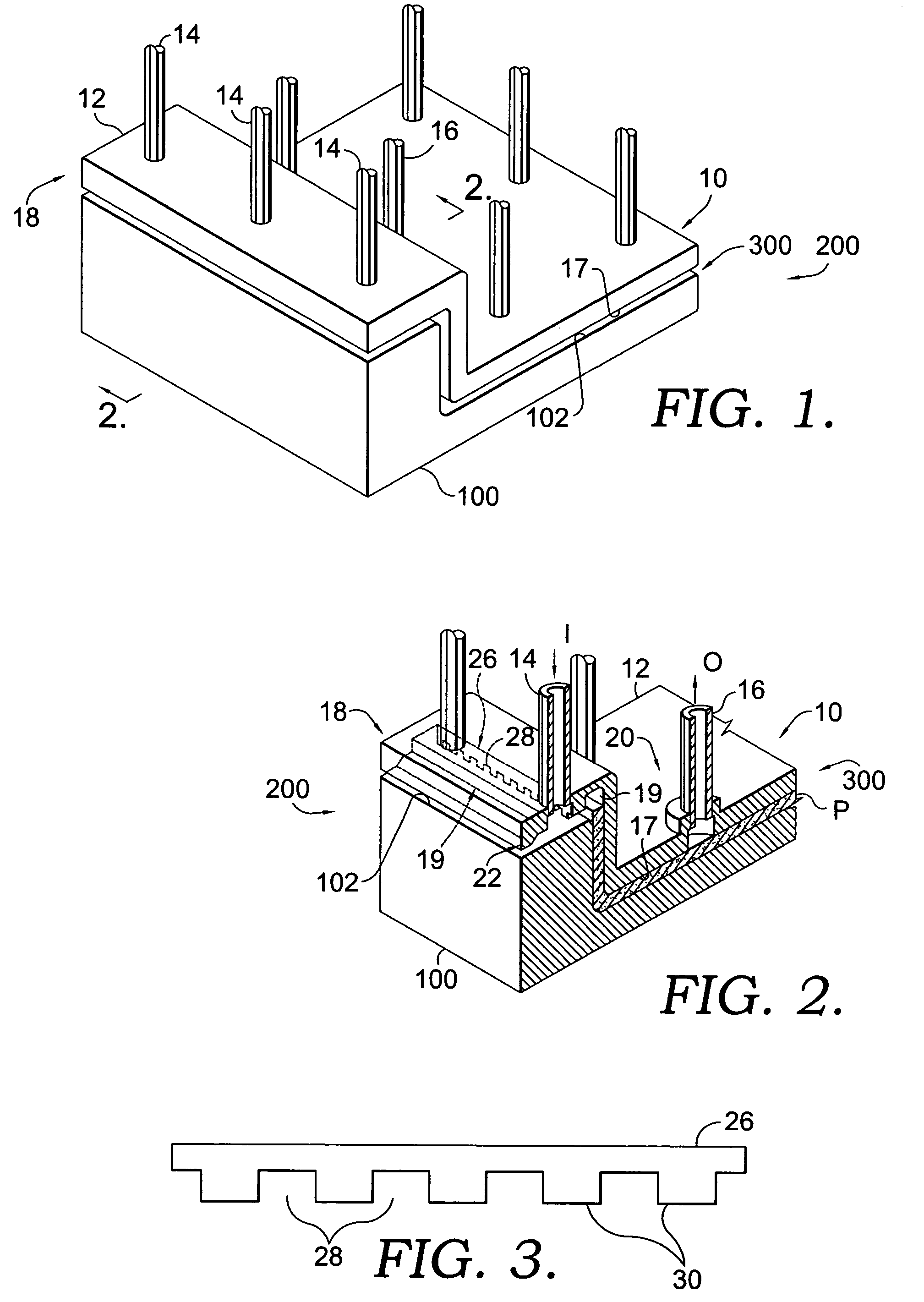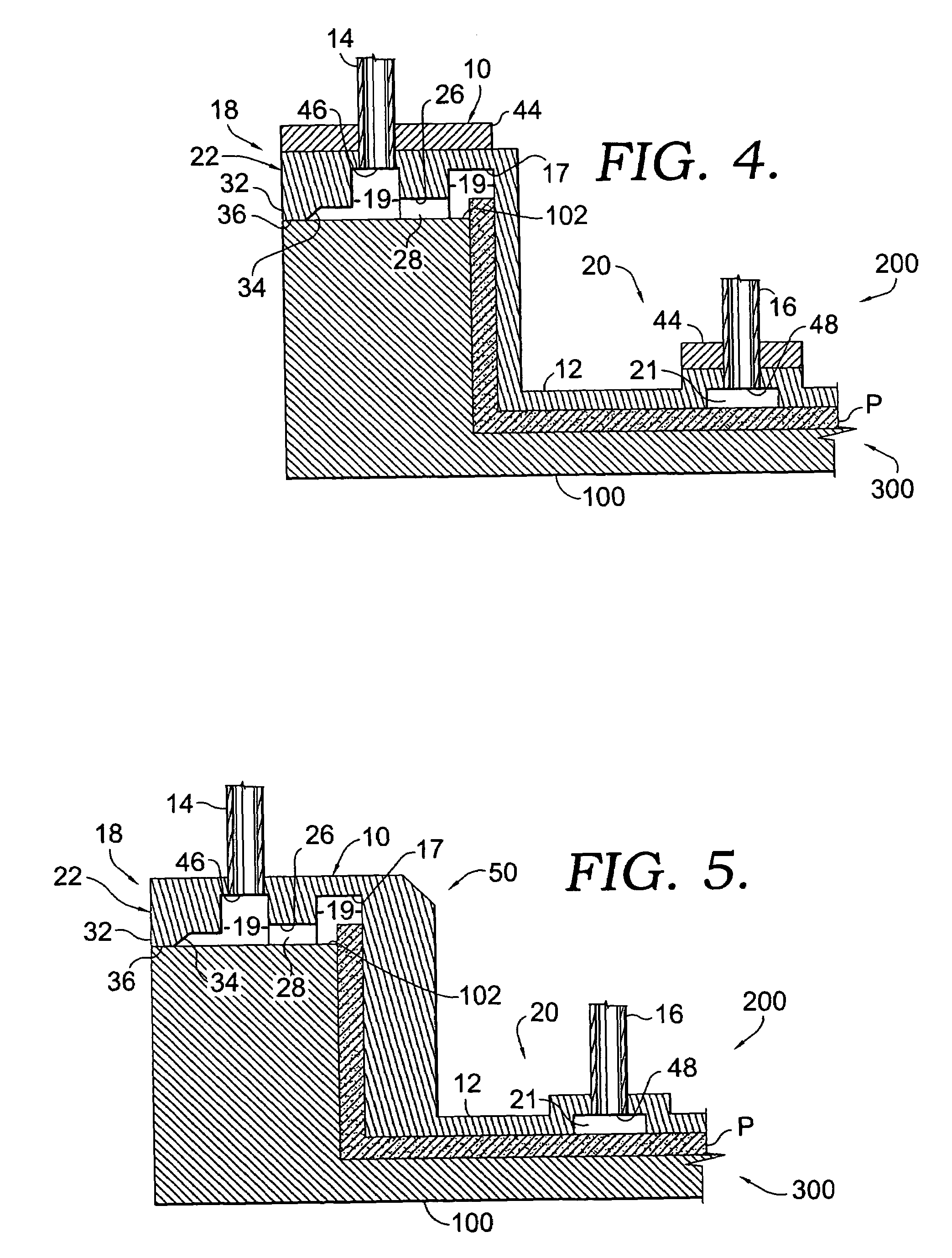Closed molding tool
a closed molding and tool technology, applied in the field of fiber reinforced composite components production, can solve the problems of less consistent part quality in high volume production, less open molding lamination process, and falling out of favor of manufacturers, and achieve the effect of facilitating the movement of resin
- Summary
- Abstract
- Description
- Claims
- Application Information
AI Technical Summary
Benefits of technology
Problems solved by technology
Method used
Image
Examples
Embodiment Construction
[0021]The present invention improves on the materials and techniques implemented in traditional vacuum bag molding by providing, in a closed molding process, a flexible molding component or tool configured for use with a base mold tool to form a fiber reinforced composite part. With reference to FIG. 1, a flexible molding component 10 is shown in use with a base mold 100—in this particular example, a rigid female mold—to form a closed molding tooling system 200 for part fabrication. The base mold 100 may also be referred to as an “A” surface tool while the molding component 10 may also be referred to as a “B” surface tool, regardless of which surface tool would be considered either a male mold or a female mold is a specific tooling configuration.
[0022]The molding component 10, seen in more detail in FIG. 2, is formed of a flexible body structure 12 having integrally formed therewith one or more resin input ports 14 for delivering resin (e.g., polyester resin) to an enclosed space 30...
PUM
| Property | Measurement | Unit |
|---|---|---|
| flexible | aaaaa | aaaaa |
| rigidity | aaaaa | aaaaa |
| physical properties | aaaaa | aaaaa |
Abstract
Description
Claims
Application Information
 Login to View More
Login to View More - R&D
- Intellectual Property
- Life Sciences
- Materials
- Tech Scout
- Unparalleled Data Quality
- Higher Quality Content
- 60% Fewer Hallucinations
Browse by: Latest US Patents, China's latest patents, Technical Efficacy Thesaurus, Application Domain, Technology Topic, Popular Technical Reports.
© 2025 PatSnap. All rights reserved.Legal|Privacy policy|Modern Slavery Act Transparency Statement|Sitemap|About US| Contact US: help@patsnap.com



